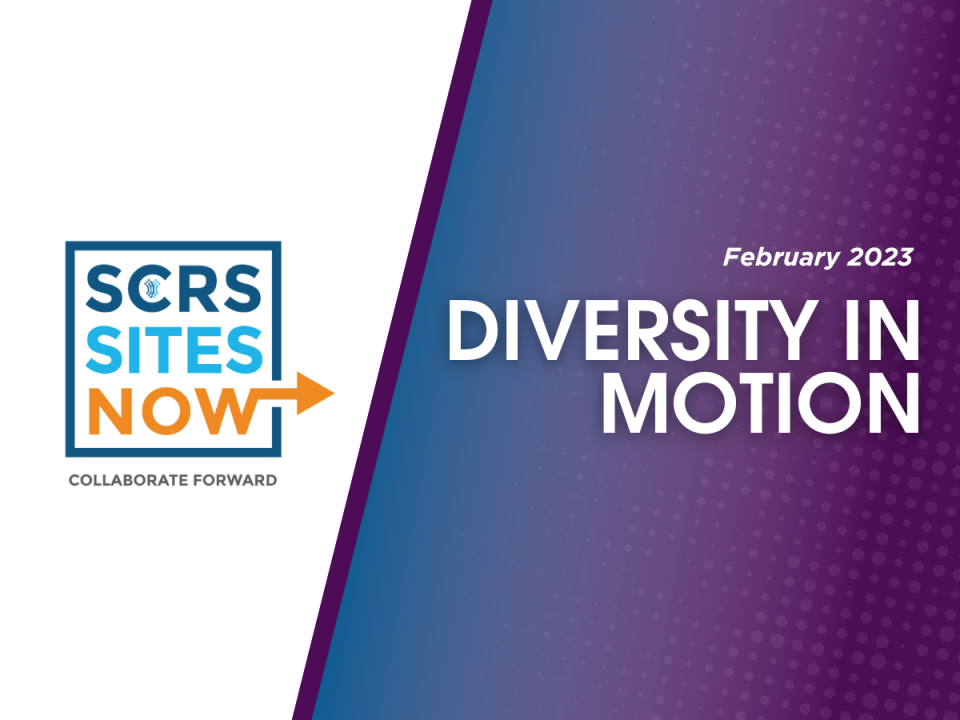Sites NOW: Site-Focused Oncology Trends for 2022

The Sites NOW January discussion, featuring panelists Peter Fredette of IQVIA, Rosemary McQueary of Quality Cancer Care and Alliance, and Alexa Florea from Roche Genentech, highlighted insights gathered from recent oncology research site surveys, acincluding trends and issues impacting the future of research.
Peter Fredette, who has worked in oncology research for nearly two decades, kicked off the conversation. “The oncology research industry is incredibly resilient. Anyone in this field can feel the urgency to get back to work, whether we do it remotely or standing on our heads. But more importantly, we’re going to try and do it better.”
Within oncology clinical research, some things were put on hold, delayed or canceled due to the pandemic, but recovery has been swift: there are currently 740+ companies focused on oncology R&D and more than 500 of those are focused exclusively on oncology R&D. Despite disruptions with COVID-19, there were 1,600 clinical trial starts over the last two years, which is an all-time high. There are also ~3,500 new drugs in the pipeline to be studied, which is unprecedented. This is up approximately 75% from 2015 numbers.
How has oncology research changed over the last few years? For starters, protocols are more complex. Procedures and data collection are increasing. Many trials are now requiring smaller subsets of patients. Additionally, oncologists are spending 20% of their time discussing COVID with their patients, which is adding to their already increased workloads. (Information on these statistics is available in the annual IQVIA Oncology Trends Report). What are the biggest issues facing oncology sites today?
Staffing Issues Remain a Challenge
According to WCG survey of site leaders, three out of four said that staffing is the most prevalent challenge in research with 1 in 5 stating staff turnover rates are 30% or higher.
In one Sites NOW January meeting poll, 80% of sites said staffing is not where it needs to be for effective operations, and 55% of sites have turned down studies due to staffing issues. Because of these challenges, 70% of staff said they have experienced a significant reduction in time available to manage patients.
The number of PIs has also dropped significantly in the past couple of years from about 15,000 to 10,000. The main causes cited include burnout and the work to do study start-ups is becoming too burdensome. Sponsors are prioritizing established investigators and may overlook new investigators, but it’s imperative to get new PIs involved in research. At the 2021 Global Site Solutions Summit, this was a hot topic of discussion where speakers suggested reaching out to medical schools, starting internship programs, training staff from within, and offering classes as suggestions to get started.
Technology
Clinical trial technologies – wearables, eConsent, eCOA, etc. – are being piloted in trials more than ever before. Many sites have participated in decentralized trials (DCTs), but panelist Rosemary McQuery commented that remote visits still require the same amount of attention and work as onsite visits. This is especially important to note as a recent SCRS survey showed that only 7% of sites feel they are being adequately reimbursed for time and effort in DCT implementation.
How will the CRA role evolve? McQuery shared, “We have a practice that just hired a screener who will be working remotely from another state. How much pre-screening can we do in a patient record without physically being onsite? AI has been helpful for oncology sites to narrow down patient lists and conduct pre-screens in a more focused way. However, no AI will be able to tell 100% accurately if a patient does or does not qualify for the study.”
Despite the efficiencies tech creates, we also must consider how they are implemented. Required staff training for new clinical trial technologies and platforms is creating an increasingly time-consuming burden on sites. Sites NOW panelists reiterated that digital competency is not an issue for site staff; the issue is the number of platforms and technologies being introduced which require separate training for each. More open communication between sites and industry is needed to address opportunities to improve training and budgeting for new technologies as they become more widely used.
McQuery would also love to see an assessment tool to analyze staff workloads. How much do you need to increase staffing to increase workload? How many people do we need to conduct these trials?
Looking Ahead
Oncology sites are exploring using mobile nurses and hiring outside of the clinical research industry to address the present issue of staffing. Increased collaboration will be huge to develop a better future for oncology research. This includes site network partnerships, site-CRO partnerships, and working with regulators and regulatory agencies. Panelist Alexa Florea urged sites to speak up and share feedback to sponsors and CROs. “Teach others what you need. Sites, be adamant about what it takes to run a trial,” said Florea. “Partnership is a way out of the muck. But you have to speak up.”
Research is hard and ever-changing. There are many opportunities for learning, growth, and efficiencies. Starting conversations now to ideate how we can move forward together will improve research for all. Plan to join us at the 2022 Global Oncology Site Solutions Summit May 21-22, 2022 at the Hilton Austin in Austin, Texas.



